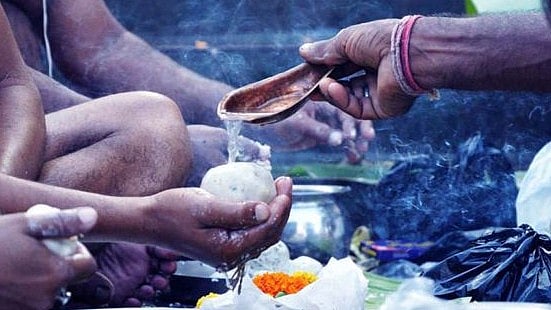We have all heard of or read about Kundalini Shakti at some point. Kundalini (the coiled one) is the serpentine feminine energy that sits coiled at the base of the spine, at the location of the Muladhara, or the Root Chakra. Yogic systems like Kriya and Meditation have a profound impact on this energy, as it seeks to rise along the subtle spinal energy channel, in a bid to achieve union with the Crown chakra, traversing the path from Shakti to Shiva. As we celebrate Nag Panchami on Monday, we explore the deep symbolism and the special place that serpentine form has held in Sanatan Dharma.
Maharishi Patanjali is perhaps universally the most famous Naga, who through his terse and yet incredibly profound Yoga Sutras, has given us the foundations of Yoga, which has now become a rage from New Delhi to New York. If you thought he waxed eloquent about the merits of Vinyasa flow, then you may be in for a surprise. Sample some of his most famous sutras, and they read ‘Yoga Citti Vritti Nirodha’, i.e. Yoga calms the stirrings of the mind and ‘Sthir Sukha Asanam’, i.e. an asana, or a posture for meditation is that which is steady and yet comfortable. The primary intent of ancient Yoga was to prepare the body for long periods of meditation, rather than the purely physical dimension that seems to dominate today. You can still experience his energy if you visit the famous Natraja temple in Chidambaram.
Lord Shiva has a natural association with snakes, he who smears himself with ashes, and the crescent moon adorns his matted locks. Snakes are meant to be very intuitive and can pick up even the subtlest of human emotions. The fact that he wears them around his neck is a metaphor for the complete control he has over his demeanour that even this most perceptive of beings is comfortable being in such close proximity to his form.
‘Hey Shesha Shayana Narayana’, glories to the supreme Narayana, who reclines on the serpent Adi Shesha. Shesha Nag, the faithful attendant of Lord Vishnu also finds several mentions in Sanatan Dharma, so much so that he also took incarnation as Balrama in Lord’s Krishna avtaar. In this incarnation too, Balrama had a very protective eye, always looking out for his younger brother, who found a way to get into trouble with the local Gopis, whether it was feasting on home-made butter, or feeding it to his band of monkeys. In one of his Leelas, Lord Krishna also taught the haughty five-headed serpent Kaaliya a lesson, taming him through a cosmic dance on his many heads.
Whilst myths would have you believe that snakes savour milk, science says that being cold blooded creatures, milk isn’t suitable for them. So if you’re looking for a safe way to mark Nag Panchami and honour this sacred serpentine form, in addition to making offerings at your local Shiva temple, also consider donating to an animal conservation charity such as RAWW (raww.in), who rescue snakes from vulnerable settings and work on safely relocating them.










